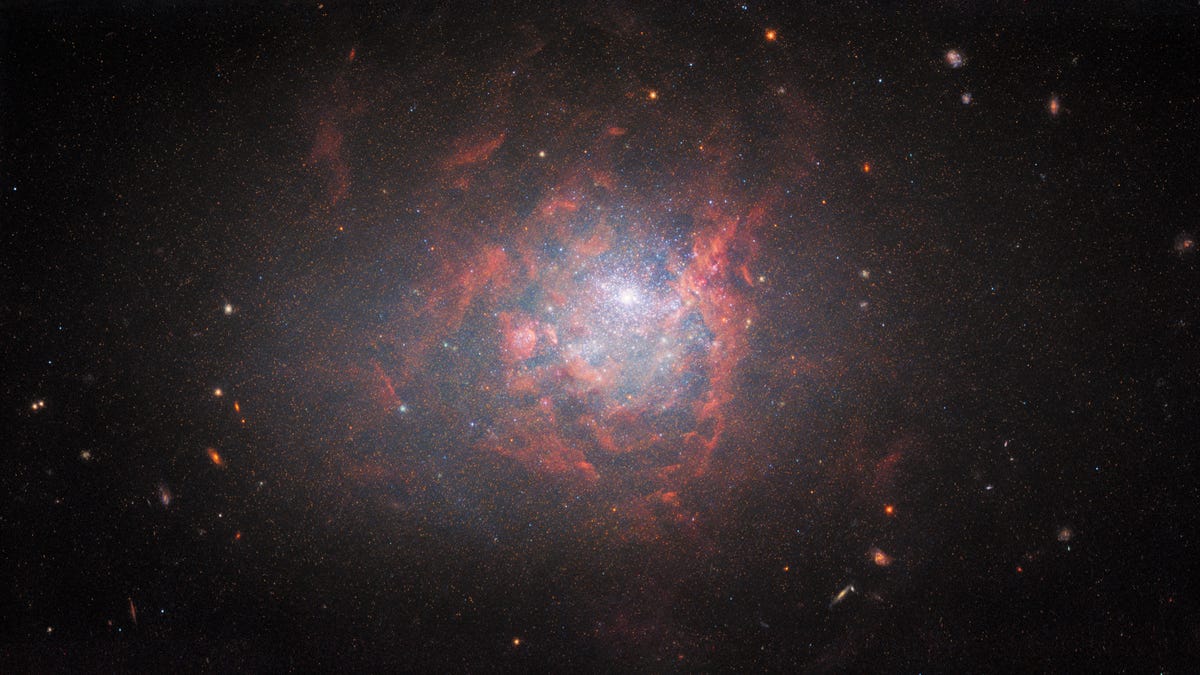Hubble Space Telescope gazes into the weirdness of a 'cosmic oddball' galaxy
NGC 1705, which recently went through a peppy "starburst" phase of star formation, could help scientists understand how galaxies evolve.
Some galaxies really have it together. They sport glorious, well-organized spiral arms and defined centers and probably always separate their lights and darks when doing laundry. And some galaxies do their own thing, like NGC 1705, the subject of a spectacular Hubble Space Telescope image.
NASA highlighted NGC 1705 -- a small dwarf galaxy with an irregular shape -- on Friday. The image looks like an amorphous blob of red clouds congregating around a sparkling center.
They might not be chiseled lookers like spiral NGC 4535, but funky galaxies like NGC 1705 are helping scientists learn about the evolution of galaxies. "Dwarf irregular galaxies tend to contain few elements other than hydrogen or helium and are thought to be similar to the earliest galaxies that populated the universe," the European Space Agency said in the statement shared by NASA . Hubble is a joint project from NASA and ESA.
NGC 1705, which deserves a nickname like "Horta Galaxy," recently went through a peppy "starburst" phase of star formation.
Hubble isn't just here for NGC 1705's enigmatic appearance. There's some serious science going on. "The data shown in this image come from a series of observations designed to unveil the interplay between stars, star clusters and ionized gas in nearby star-forming galaxies," ESA said.
While a lot of attention is focused on the new James Webb Space Telescope, Hubble continues to deliver outstanding observations despite technical challenges and the ravages of age. It's been at work for over 31 years. It might be an elder telescope, but it's spry.


